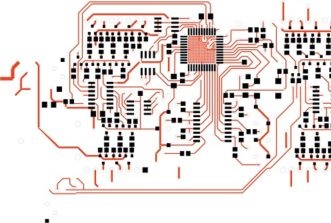This website uses cookies so that we can provide you with the best user experience possible. Cookie information is stored in your browser and performs functions such as recognising you when you return to our website and helping our team to understand which sections of the website you find most interesting and useful.
Revolutionary 3D-Printer Ink Enables Recyclable Electric Circuits
A groundbreaking development in the world of 3D printing has emerged from a collaboration between US and Korean researchers. This innovative team has successfully created a 3D-printing ink that has the remarkable ability to produce structures that are easy to recycle, all without the need for any heat or light sources. The key to this remarkable ink lies in its unique properties - it solidifies upon contact with salt and can be dissolved back into reusable ink when exposed to fresh water.
The potential applications of this revolutionary ink are vast and varied. The researchers envision its use in disposable electronics, robotic components, and rapid prototyping. Their groundbreaking work has been documented and published in the prestigious scientific journal, Nature Communications, showcasing the significance of their discovery.
Traditionally, polymer inks have been essential tools for 3D printing intricate and small-scale devices. However, these inks often require high energy inputs or additional solvents to achieve optimal printing results. In contrast, the method devised by the researchers utilizes a polymer known as poly(N-isopropylacrylamide), or PNIPAM. This non-toxic polymer is commonly employed in the pharmaceutical industry for drug delivery systems, highlighting its safety and versatility.
One of the key characteristics of PNIPAM is its behavior in different solutions. When PNIPAM is introduced to water, it transforms into a liquid state; however, when it encounters a saline calcium chloride solution, it undergoes a phase change and solidifies. Leveraging this property, the research team successfully created an electric circuit embedded with carbon nanotubes using their innovative method, demonstrating its practical applications by powering a small light bulb.
Moreover, the recyclability of the structures created using this ink is a game-changer in the field of 3D printing. By immersing the printed structures in fresh water, the researchers were able to dissolve them effortlessly. Subsequently, by evaporating the water at a moderate temperature of 70°C, they obtained dry, reusable PNIPAM material that could be re-dissolved in water to generate fresh ink, completing the sustainable cycle of production and recycling.














